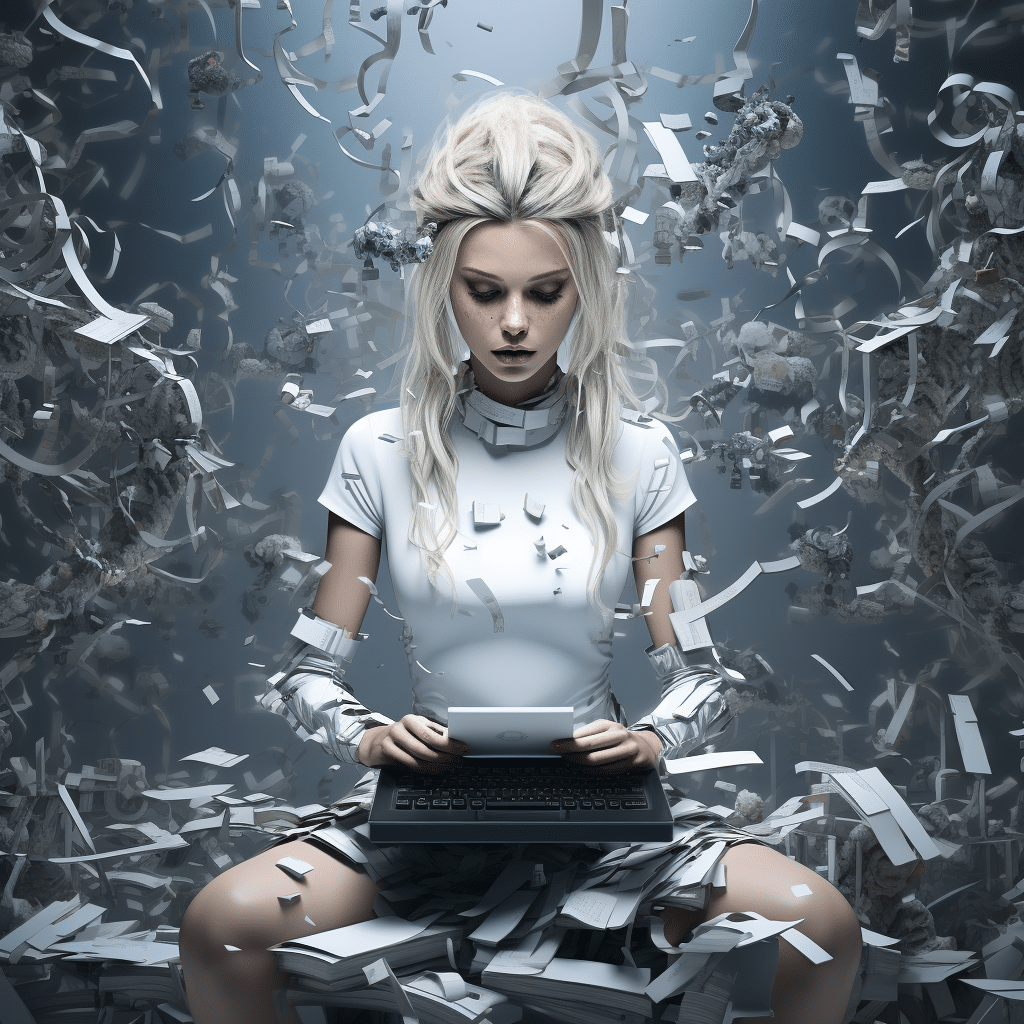In the annals of tech innovation, chatGPT plagiarism has occupied a controversial and intriguing chapter. Unveiling the enigma of this advanced language model, developed by none other than OpenAI, we delve into debates on plagiarism and associated ethical quandaries stirring up within the AI realm. Does our vigorous pursuit of technology change the definition of plagiarism, or are we allowing tools like chatGPT to force us back to the drawing board and question the essence of creative authorship?
Unveiling the Veil: The Complicated Case of chatGPT and Plagiarism
To comprehend the convoluted realm of chatGPT and plagiarism, we must first understand the workings of this artificial intelligence. ChatGPT, which stands for Generative Pretrained Transformer, generates human-like text by predicting the next word based on the input given. This remarkable piece of technology implies no direct copying, but it’s this very capability that has raised questions about academic integrity.
The nuances of ‘where to draw the line’ are easily blurred when artificial intelligence comes into play. Does changing a single word in a sentence make a difference? What about the usage of complex machine learning algorithms to generate text? While the responses vary wildly depending on one’s perspective, one point remains clear: the framework for understanding plagiarism and AI is far from black-and-white.

The Specter of Plagiarism: Does chatGPT count as Plagiarism?
Contemporary plagiarism involves the outright copying of someone else’s work without proper credit, a concept rather straightforward compared to the new-age specter of chatGPT-induced plagiarism. Unlike traditional copying, chatGPT mounts an impressive AI-driven show, generating never-seen-before text while leaving no direct trace of copying. Thus, the ethical implications of chatGPT usage are starkly different than conventional plagiarism.
By no means does the use of chatGPT equate to the typical definition of plagiarism, as it doesn’t truly ‘copy’ the work conventional sense. However, from an academic integrity standpoint, using work generated by chatGPT could land one in a sea of ethical debates. Is it entirely fair to use a machine-generated essay? Or does it undermine the very spirit of the academic journey, turning technology into a crutch rather than an aid?
The Inside Story: What Says a chatGPT Plagiarism Checker?
As the AI writing sphere evolves, so does the science of detecting machine-crafted work. The battle against possible chatGPT plagiarism has led to the development of specialized checkers like the Chatgpt detector.
These plagiarism checkers are designed to sniff out AI-created content by identifying the distinctive patterns of language used by chatGPT. They break the text down, looking for the semantic trails left by the AI. However, they are presently battling the indistinguishability of AI-written texts, making the chatGPT’s seamless impersonation of human language hard to debunk.

The Lawsuit Labyrinth: Can chatGPT be sued for plagiarism?
Our exploration leads us to the legal implications of chatGPT and plagiarism. The method in which AI gathers data is currently in the spotlight, thanks to several Class-action Lawsuits. Amidst these legal labyrinth, suing chatGPT or even OpenAI for plagiarism is a challenging prospect.
AI does not generate content using traditional copyright-violating approaches; it replicates linguistic patterns to produce unique text. So, to build a case against chatGPT on the grounds of plagiarism, the existing understanding of copyright laws and data use regulations may need a tech-centric revamp.
The Academic Angle: ChatGPT, Turnitin, and Academic Dishonesty
Whilst the world debates chatGPT plagiarism, education sectors have quietly opened another front. The use of AI tools, including chatGPT, to complete academic assignments is seen by many as academically dishonest. Complex plagiarism detection tools like Turnitin are designed to pick slight instances of copied text, let alone AI-generated essays.
Surprisingly though, Chatgpt can be detected by Turnitin. This only cements the necessity for equipping academic settings with the best plagiarism detection tools to foster a fair learning environment.

The Two Faces of AI Tools: A Savior, a Deceiver or Both?
In the quest for excellence, AI tools like chatGPT have been leveraged across several industries to improve efficiency and productivity. However, they are not without their ethical dark side. Using AI aids can ease the process of learning or content generation, but if they become the sole source of content, the ethical implications concerning intellectual honesty are significant.
Nonetheless, using these AI tools is not always academically dishonest. By using AI responsibly and citing any AI-generated phrases or sentences used, we can combat the pitfalls of academic dishonesty associated with AI tools. Still, the potential for misuse has sparked debates around academic integrity and chatGPT plagiarism.
Charting Future Paths: Navigating the Technological Terrain of AI and Academic Integrity
To navigate the technological terrain of AI and academic integrity, reflection on the dynamics of AI tools and plagiarism is imperative. The evolution of chatGPT plagiarism debates, the chatGPT plagiarism checker, and the role of conventional checkers like Turnitin has reshaped our understanding of academic honesty in the face of AI advancements.
In the foreseeable future, plagiarism identification and prevention may need to further adapt to AI-centric innovations. The journey through the realms of AI and plagiarism will be filled with unchartered territories, exciting breakthroughs, and perhaps even a few ethical landmines. Regardless, as we move forward, one thing remains clear: AI—whether a savior, a deceiver, or both—is here to stay.





















